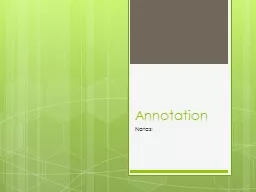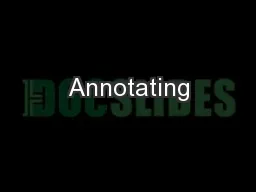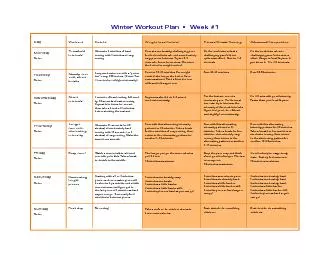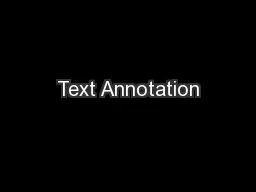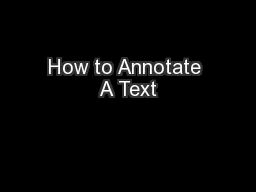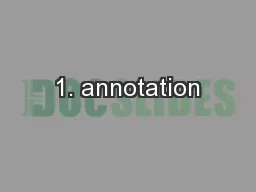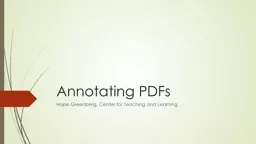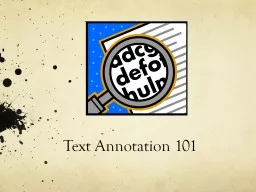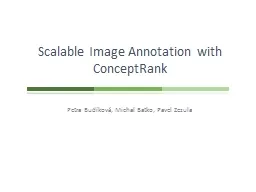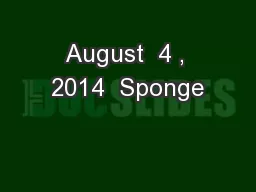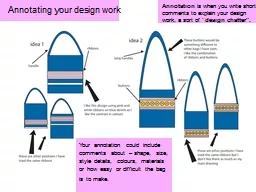PPT-Annotation Notes: Annotating
Author : liane-varnes | Published Date : 2018-03-06
Annotating a text is like having a conversation with a book it allows active readers to ask questions comment on meaning and mark events and passages you want to
Presentation Embed Code
Download Presentation
Download Presentation The PPT/PDF document "Annotation Notes: Annotating" is the property of its rightful owner. Permission is granted to download and print the materials on this website for personal, non-commercial use only, and to display it on your personal computer provided you do not modify the materials and that you retain all copyright notices contained in the materials. By downloading content from our website, you accept the terms of this agreement.
Annotation Notes: Annotating: Transcript
Download Rules Of Document
"Annotation Notes: Annotating"The content belongs to its owner. You may download and print it for personal use, without modification, and keep all copyright notices. By downloading, you agree to these terms.
Related Documents

